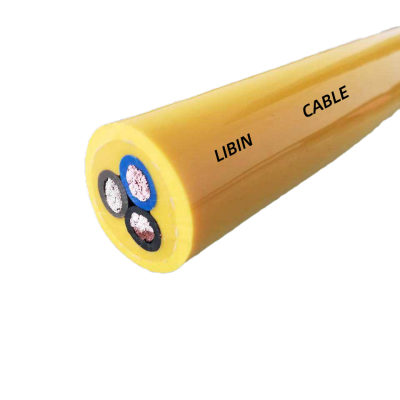Reel cable is a flexible moving cable installed and used in heavy mobile mechanical equipment with reel/reel or other similar drag-shaft device for the use of power supply or control connections during frequent movement. The common model of the traditional reel cable is RVV-NBR, its structure is the structure of RVV cable, only the sheathing uses NBR (elastomer butyronitrile) material design, but this model is difficult to meet the requirements of higher mechanical equipment mobile operation, as well as more complex and harsh working environment.
Therefore, it is necessary to select materials for fit conditions and to continuously improve and optimize structural design. For the installation and application of reel/reel, the current reel cable adopts the new double-layer sheath structure design, which can better meet the basic performance requirements such as tensile and torsional resistance under the frequent winding and dragging of the reel/reel device, so that the cable can have a longer installation and service life.
In the structural design of cable:
Anaerobic bare copper wire multi-stranded bunched cable conductor with suitable single wire diameter (refer to VDE 0295/CLASS 5 conductor standards) with square feet; The suitable diameter of single wire selected according to the size of the specification ensures the flexibility and toughness of the cable. The optimized conductor stranded structure improves the moving performance of the cable. The square conductor design makes the cable safer to use.
Cable insulation is designed with special mixed elastomer nitrile material to meet the strict electrical performance of the cable, excellent flexibility and mechanical properties, and non-adhesion to each other, strong adaptability to installation and application under moving;

The cable can be placed into galvanized soft tensile steel wire rope, flagpole rope, Kevlar tensile fiber, TP rope and other load-bearing components according to the need to enhance the cable tensile performance; Usually, the center filling design is adopted to truly become the center tensile, which can also better protect the core structure and prevent the core from drifting, such as core slip and jump.
Double layer sheath + tensile and torsional braided layer structure strengthening design, better stable cable internal structure, in order to adapt to the frequent winding movement under the drum/reel, improve the cable tensile performance, at the same time to ensure the cable torsion resistance, in order to deal with the torsional stress faced by frequent movement;
Specially modified elastomer nitrile material or polyurethane TPU/PUR material sheath design, so that the cable has better environmental resistance, but also can effectively take into account the cable cost, meet the cable under different working conditions of wear resistance, weather resistance, tear resistance, weather resistance, oil resistance, water resistance, temperature resistance, flame retardant, mechanical fatigue resistance and other properties.
Therefore, the performance of the new double-layer sheathed reinforced structure design reel cable is better than that of the traditional cable, and it can be better applied to the towing resistance of the heavy mobile mechanical equipment with reel/reel winding device, and the material selection of the fitting condition. Cable can be widely used in gantry crane, crane, port machinery, garbage crane, slag crane, cleaning machine grab, Marine grab, electric scraper, rock drilling trolley and other mechanical equipment, widely used in port, wharf, freight yard, storage yard, ships, mines, power plants and other different working conditions.


 Be gentle and firm · Move easily
Be gentle and firm · Move easily
 English
English





